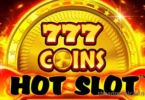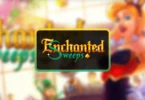Revolut is a payment and investment service that lets you buy stocks and cryptocurrency. Revolut has recently introduced a new option to earn free cryptocurrency via interactive quizzes.
But do you know the Revolut crypto quiz answers to get a free Polkadot? The new Revolut quiz is modeled after the most recent Binance Quiz and Coinbase Quiz, providing users with a novel opportunity to earn free cryptocurrency.
In this article, you will learn the Revolut Crypto quiz answers for the crypto learn feature, which allows you to earn $ in DOT.
What Exactly Is The Revolut Crypto Quiz Answers?
The Revolut crypto quiz is part of the Revolut Learn and Earn program. It is a series of exams that allow Revolut users to earn iExec, Axelar, Algorand, Avalanche, Polkadot, and 1inch protocol tokens for successfully passing them. It is critical to answer all of the questions correctly.
Revolut Crypto Basics Quiz Answers
The Crypto basics quiz consists of four lessons, each with an exam. Once completed, you will be rewarded with DOT (Polkadot) tokens worth 1 EUR, though the exact quantity may vary by country.
Lesson 1. Crypto VS Fiat Quiz Answers
Question: What is ‘fiat’ money?
Answer: Government-issued money.
Question: What is the primary difference between fiat currency and cryptocurrency?
Answer: Cryptocurrencies are decentralized, while fiat money is regulated by a central authority.
Question: Who is responsible for validating blockchain transactions?
Answer: Special users are known as miners or ‘validators’.
Lesson 2. Cryptography in Crypto
Question: Why is cryptography crucial in cryptocurrency?
Answer: It eliminates the need for a centralized authority, prevents double spending, and increases security.
Question: What are private and public keys?
Answer: A public key is similar to your account number, whereas a private key is analogous to your password.
Question: Which statement is correct concerning private and public keys?
Answer: It is impossible to determine someone’s private key by glancing at their public key.
Lesson 3. Basics of Blockchain
Question: What is a blockchain?
Answer: A decentralized database.
Question: Who can view the blockchain?
Answer: Anyone with a computer and the internet.
Question: How does the blockchain differ from a traditional database?
Answer: It is not controlled by a central party and can be viewed by everyone.
Lesson 4. Risks of Crypto
Question 1: What regulatory protections does your cryptocurrency have?
Answer: None – most countries do not regulate cryptocurrency.
Question 2: How much can you lose if you buy cryptocurrency?
Answer: Everything; your investment could fall to zero.
Question 3: When would it not be appropriate to purchase cryptocurrency?
Answer: When you are in debt or can’t afford to lose your investment.
Revolut Polkadot Quiz Answers
The Polkadot quiz is divided into five sections and has an equal amount of tests. Successful completion of these tasks will result in Polkadot (DOT) tokens worth about 1 EUR.
Lesson 1. Intro to Polkadot
Question 1: What are the limits of early blockchains such as Bitcoin?
Answer: Slow transaction speeds, hefty fees, and inability to interface with other blockchains.
Question 2: What is Web 3.0?
Answer: A new web based on decentralized technologies, giving consumers more control over their data.
Question: How does Palkadot work around some of the constraints of earlier blockchains?
Answer: It allows many blockchains to communicate with one another and execute transactions simultaneously.
Lesson 2. Polkadot’s Operations
Question: What exactly is a relay chain?
Answer: A blockchain that connects to other blockchains and enables them to communicate.
Question: What is a parachain?
Answer: A blockchain that links to the relay chain and operates concurrently with other parachains.
Question 3: What challenges do parachains and relay chains address?
Answer: Blockchain’s incapacity to communicate with one another.
Lesson 3. Who gets to decide Polkadot’s future?
Question: Who may vote on new Polkadot Network initiatives, such as network upgrades?
Answer: People with a DOT token.
Question: What is Polkadot’s “On-Chain Treasury”?
Answer: A collection of tokens that can be used to support network-benefiting projects.
Question 3: How does Polkadot’s governance mechanism differ from other popular blockchains?
Answer: Its governance is based on community votes.
Lesson 4. The DOT Token
Question 1: What is the name of Polkadot’s crypto token?
Answer: DOT.
Question 2: What does it mean to take Polkadot (DOT) tokens?
Answer: Helping to secure the network by locking up DOT tokens in exchange for DOT awards.
Question 3: What does it mean to ‘bind’ Polkadot tokens?
Answer: Locking up tokens to secure a spot for your parachain on the relay chain.
Lesson 5. Polkadot and its use
Question 1: What are the various applications of Polkadot?
Answer: NFTs, DeFi, powering smart cities, and more.
Question 2: How do Polkadot apps vary from smartphone apps?
Answer: Polkadot-based apps do not require a middleman and can protect your data.
Question 3: How do apps on parachains communicate?
Answer: Through the Relay Chain.
Revolut iExec answers
The iExec quiz contains two lessons and an equal amount of tests. After completing them, you will receive iExec (RLC) tokens worth 0.2 EUR. The real amount varies by country.
Lesson 1. Intro to iExec
Question: What advantages does iExec bring to Web3?
Answer: All of the above.
Question: How is the RLC token used on the marketplace?
Answer: As a means of exchanging on the iExec Marketplace and securing the platform.
Question: What are iExec’s primary offerings to its developers?
Answer: All of the above.
Lesson 2. iExec’s latest product
Question: Why is communicating with Web3 users difficult?
Answer: Web3 users communicate using cryptocurrency wallets.
Question: Which of iExec’s developer tools lets you send emails to registered Ethereum account holders without knowing their email addresses?
Answer: Web3Mail.
Question: How will consumers of the Web3 ecosystem benefit from iExec’s latest developer offering, Privacy-Enhancing Marketing?
Answer: It allows users to make money from receiving emails while maintaining their privacy.
Axelar answers
The Axelar quiz contains three lessons and an equal number of tests. After completing them, you will obtain Axelar (WAXL) tokens worth 0.3 EUR. The real amount varies by country.
Lesson 1. Meet Axelar
Question: Which of the following accurately describes Axelar?
Answer: All of the above.
Question: What is the foundation of Axelar’s security strategy?
Answer: Decentralization.
Question: Which of the following is true?
Answer: Axelar enables applications to seamlessly interface with any blockchain.
Lesson 2. The AXL Token
Question: How does Axelar identify validators and token holders who consistently safeguard the network?
Answer: By allocating incentives and fees for network transactions.
Question: Which of the following is true about Axelar’s token economics?
Answer: The ideal network structure will be selected by Axelar token holders.
Lesson 3. Axelar’s cross-chain future
Question: How does Axelar enhance the security approach of first-generation bridges?
Answer: Using proof-of-stake validation.
Question: Which of the following statements are true about Axelar General Message Passing?
Answer: It enables applications to send and receive logic across many chains, hence encouraging cross-chain integration.
Question 3: What distinguishes Web3 development from traditional app development?
Answer: Web3 enables developers to integrate applications across blockchains, perhaps creating a super app.
1inch answers
The 1-inch quiz consists of three courses and an equal number of tests. After completing them, you will obtain 1INCH (1inch) tokens worth around 4.5 EUR. The real amount varies by country.
Lesson 1. Decentralized exchanges
Question: Who facilitates a trade on a DEX?
Answer: No one. The exchange is done peer to peer.
Question: Which of the following constitutes a decentralized exchange?
Answer: Uniswap.
Question: What does “DEX” stand for in cryptocurrency?
Answer: Decentralized exchange.
Lesson 2. How does 1inch find the best deals?
Question: What is the name of the 1inch pricing search algorithm?
Answer: Pathfinder.
Question: How does 1inch identify the best prices?
Answer: 1inch collects trading options from several DEX platforms.
Question: Which of the following is not a feature of the 1″ Pathfinder?
Answer: Provide directions to your destination.
Lesson 3. DAOs and Governance
Question: Which of the following describes a DAO?
Answer: decentralized.
Question: Who can vote on 1inch proposals?
Answer: Users who have staked their 1INCH tokens.
Question: Give an example of a proposal that 1inch DAO members could vote on.
Answer: allocating treasury funds for a specific plan.
Algorand
The Algorand quiz consists of two courses and the same number of tests. After completing them, you will receive Algorand (ALGO) tokens valued at around 0.2 EUR. The real amount varies by country.
Lesson 1. Intro
Question: Which of the following is true about Algorand transactions?
Answer: They are secure, extremely fast, and inexpensive.
Question: What is Algorand’s consensus protocol?
Answer: Pure Proof of Stake.
Question: How does Algorand differ from other blockchains?
Answer: It does not fork.
Lesson 2: Algorand & Sustainability
Question: What makes Algorand sustainable?
Answer: all of the above.
Question: What happens if a governor fails to keep their interest in ALGO during the governance period?
Answer: They will lose their governance incentives.
Question: How does Algorand maintain carbon neutrality?
Answer: By working with international organizations to offset carbon emissions.
Avalanche answers
The Avalanche quiz consists of two courses and the same number of tests. After completing them, you will obtain Avalanche (AVAX) tokens worth around 1.5 EUR. The real amount varies by country.
Lesson 1. What is Avalanche?
Question: What is Avalanche’s native token?
Answer: AVAX.
Question: What is the truth regarding the Avalanche Consensus Protocol?
Answer: The Avalanche Consensus Protocol requires less energy than other blockchains.
Question: Which of the following is required to be an Avalanche validator?
Answer: Stake at least 2,000 AVAX tokens.
Lesson 2. How does Avalanche scale?
Question: What methods does Avalanche employ to improve transaction speed?
Answer: Subnets.
Question: Why are Subnet’s membership options beneficial to financial services companies?
Answer: They can help meet compliance needs.
Question: What is the long-term value of Subnets for users?
Answer: More affordable gas fees.







